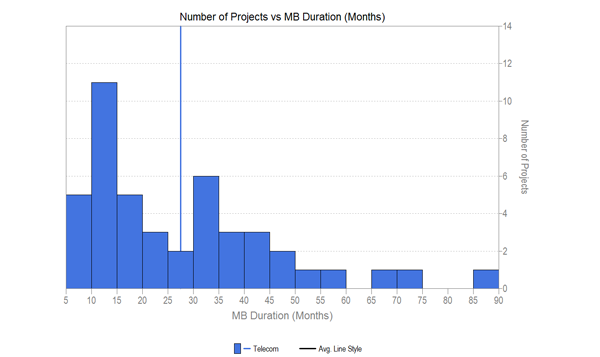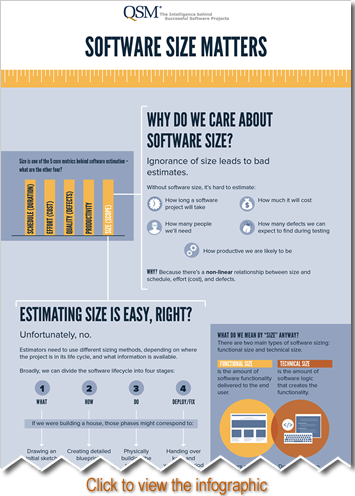6 Essential Software Sizing Resources

Project managers and estimators have long struggled with the issue of how to measure software size. Really, before you can calculate cost and schedule, you will need some notion of how big the project will be. There are myriad of ways to size a project depending on the methodology you use and where you are in the planning process. Here at QSM, it's one of the common questions we receive, so we've devoted many years of research to the topic. Our website features a wealth of resources on sizing and in this post, we will highlight a few of the most valuable for anyone grappling with this issue or looking for a place to start.
General Sizing
- QSM's Software Sizing infographic is a great place to start. This easy to understand visual resource helps explain the most popular sizing methods and when to use them, the difference between functional and technical size, sizing challenges and more!
- Measuring Software Size - Insights from the Past to Guide the Future is another helpful guide if you're struggling with which sizing units to use. This PDU-approved webinar will help you determine what sizing measure will work for you based on your own historical data. This presentation is worth a watch no matter what development methodology you use and can help improve future estimates and in-flight project forecasts.
Function Points


 I have been a software project estimator for 20 years. Like many people who have worked a long time in their profession, I find myself applying my work experience to other events in my life. So, when a family member tells me that he or she will be back from a trip into town at 3:30, I look at their past performance (project history) and what they propose to do (project plan) and add an hour. Usually, I am closer to the mark than they are.
I have been a software project estimator for 20 years. Like many people who have worked a long time in their profession, I find myself applying my work experience to other events in my life. So, when a family member tells me that he or she will be back from a trip into town at 3:30, I look at their past performance (project history) and what they propose to do (project plan) and add an hour. Usually, I am closer to the mark than they are.

 Dear Carol:
Dear Carol: